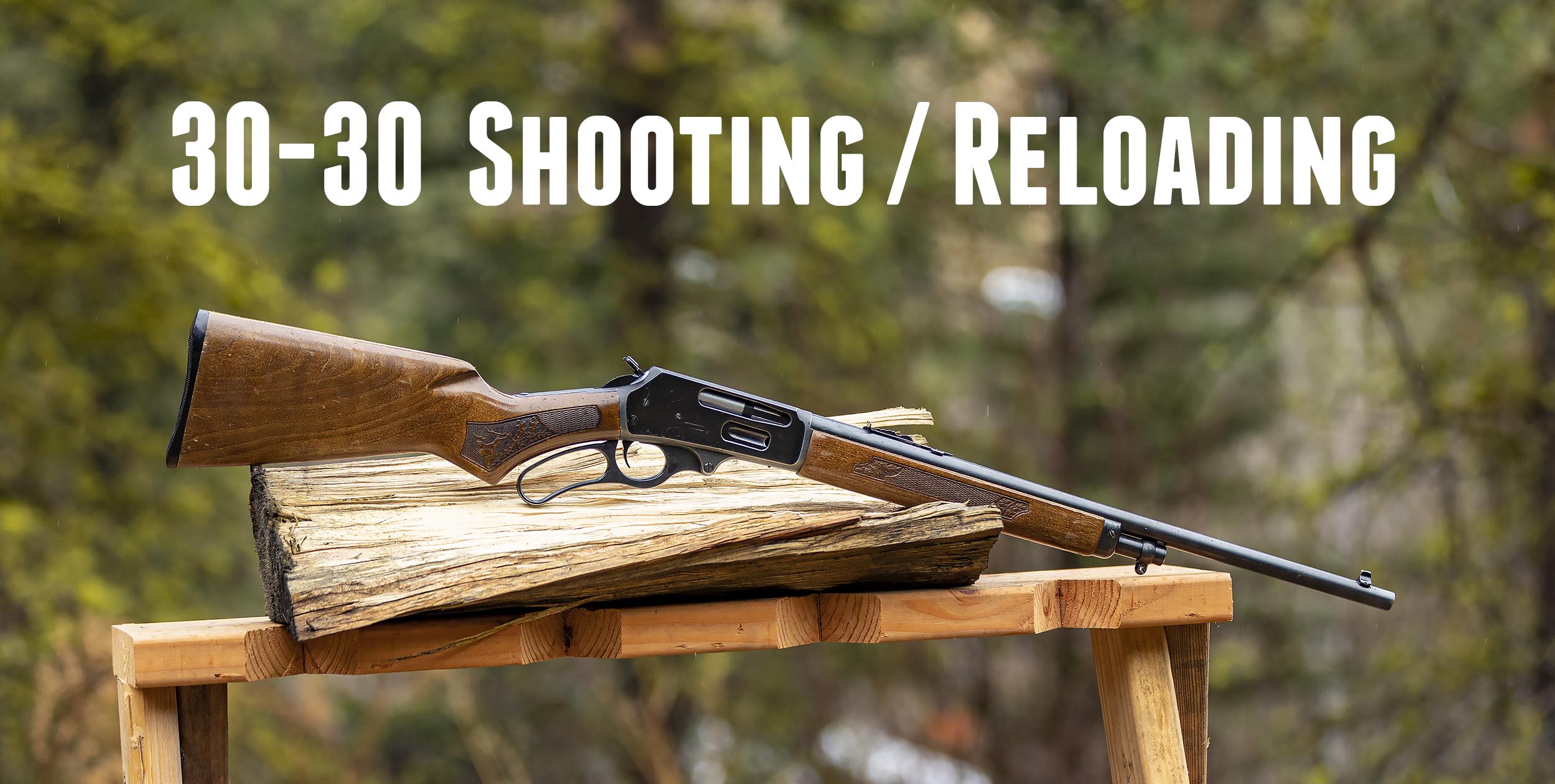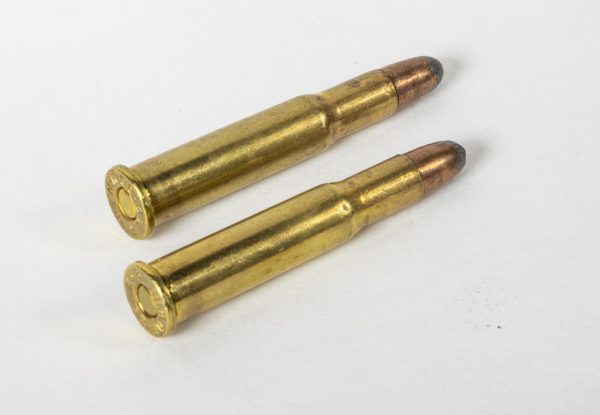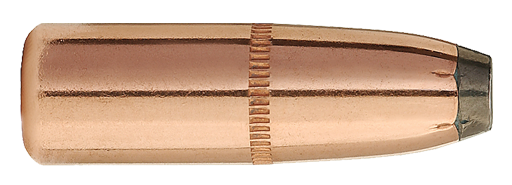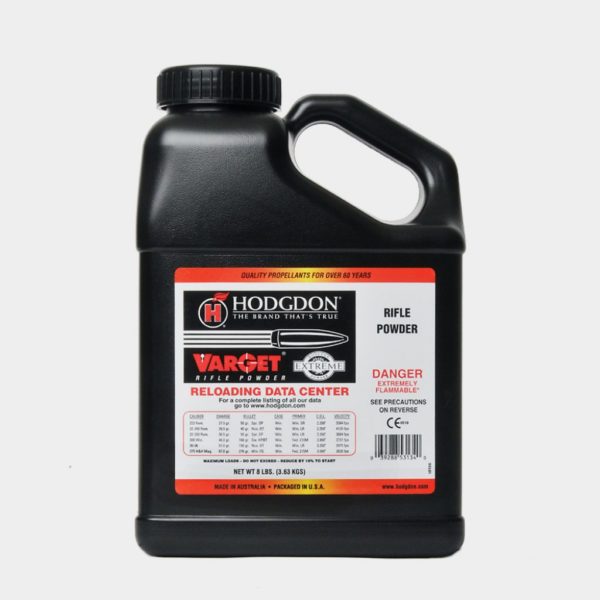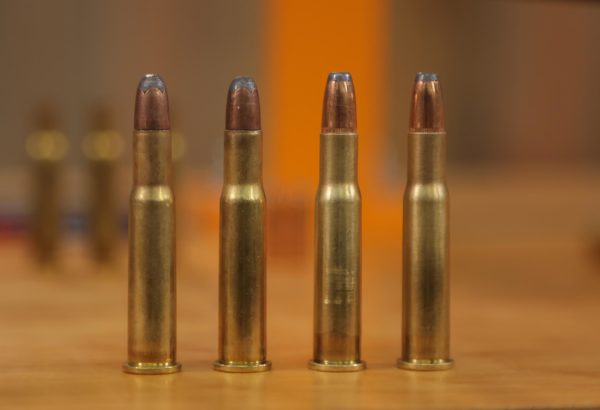This article was written by Guy Miner
Is the 30-30 lever action rifle still a worthy hunting rifle in the 21st Century? Oh my goodness yes! I do love my lever action rifles, and in this story I’ll both expose Gavin to the lever action 30-30 *and* walk through the reloading process as well. Let’s get going!
Disclaimer
Ultimate Reloader LLC / Making with Metal Disclaimer: (by reading this article and/or watching video content you accept these terms)
- The content on this website (including videos, articles, ammunition reloading data, technical articles, gunsmithing and other information) is for demonstration purposes only.
- Do not attempt any of the processes or procedures shown or described on this website.
- All gunsmithing procedures should be carried out by a qualified and licensed gunsmith at their own risk.
- Do not attempt to repair or modify any firearms based on information on this website
- Ultimate Reloader, LLC and Making With Metal can not be held liable for property or personal damage due to viewers/readers of this website performing activities, procedures, techniques, or practices described in whole or part on this website.
- By accepting these terms, you agree that you alone are solely responsible for your own safety and property as it pertains to activities, procedures, techniques, or practices described in whole or part on this website.
A Bit of 30-30 Background
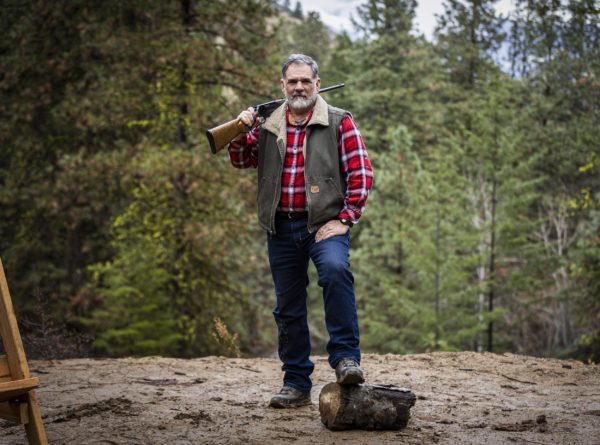
Let’s talk about the 30-30 cartridge. Introduced in 1895 as a smokeless powder cartridge with a jacketed bullet, and chambered in light, handy lever-action rifles, it was a big hit. It’s a rimmed case and is most often seen in lever action rifles, though bolt action and single-shot rifles have been chambered for the 30-30 as well. This cartridge headspaces on the rim, and operates at modest pressure, with a SAAMI max avg of 42,000 psi. Here it is, well over a hundred years later, still going strong.
My rifle is a 1970’s Glenfield, built by Marlin as an economy version of their 336 model. It has a four-shot tubular magazine, birch stocks with the pressed-in checkering design and lacks the distinctive Marlin Bullseye on the stock. Some argue that the short-mag versions like this are more accurate. I haven’t seen any proof one way or the other about that, but I do know that this one shoots just fine for the purpose intended, deer sized game out to about 200 yards.
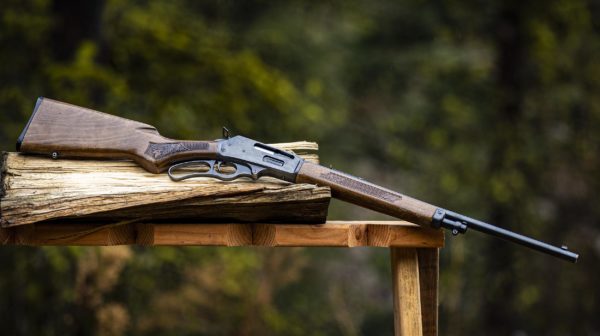
Above: Guy Miner’s Glenfield lever action 30-30
My rifle has no safety. SHOCK! No – that’s the traditional way to build a lever action rifle. So, while moving when hunting, I tend to carry it in hand with all four cartridges in the tubular magazine and nothing in the chamber. When sitting in a blind, I’ll chamber a round, but carefully lower the hammer to “half cock” and leave it there. That way I can silently cock the rifle when the buck or bear appears. Just because there’s no safety on a rifle, doesn’t mean that it’s unsafe. Later versions of this rifle have a safety that works very well if you have one of those, and my 45-70 Marlin is so equipped.
Two of the most popular traditional tube-magazine fed lever action rifles are the Winchester 94, and the Marlin 336. I’ve owned both, as well as my current Glenfield. The Winchester is slimmer, handier, and a bit lighter in general. The Marlin is a little heavier, and has that flat top on the receiver, making scope mounting very simple. I’ve always preferred the Marlin, but have absolutely nothing against Winchester either. A newer entry into the traditional lever action rifle market is the Henry, and they have proven to be well designed, well made rifles too.
What keeps these lever action rifles popular is that they handle great. They’re easy to carry, fairly compact, and deliver good performance at reasonable ranges. I find that they’re just an awful lot of fun to carry and shoot. I’m hoping to make more venison with it later this year.
Scope a lever action rifle?
Some lever action enthusiasts really dislike that, but I find that it helps me with shot placement while hunting, particularly in low light. I also enjoy shooting it with either the factory sights or with an aperture sight mounted on the receiver, such as the Lyman, Williams or the Skinner. This older 3x Leupold (long out of production) is light, simple and seems to match the rifle and the purpose. Other great scopes for lever-action rifles include the Leupold VX-Freedom 1.5-4x Pig Plex and similar low powered variable or fixed power scopes.
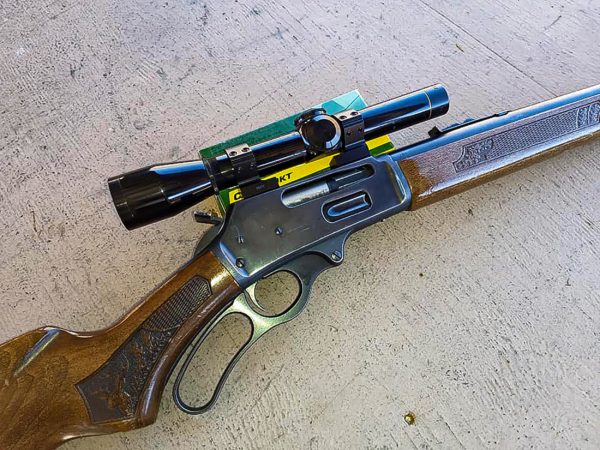
This is the old M-8 Leupold 3x scope that I use on my 30-30 Glenfield.
As an alternative to a scope, but still a considerable improvement over the standard sights found on most lever actions, consider a receiver mounted aperture sight such as the Williams, Lyman or Skinner. This is the Williams sight I had mounted on my 30-30 Glenfield for a few years. It worked great!
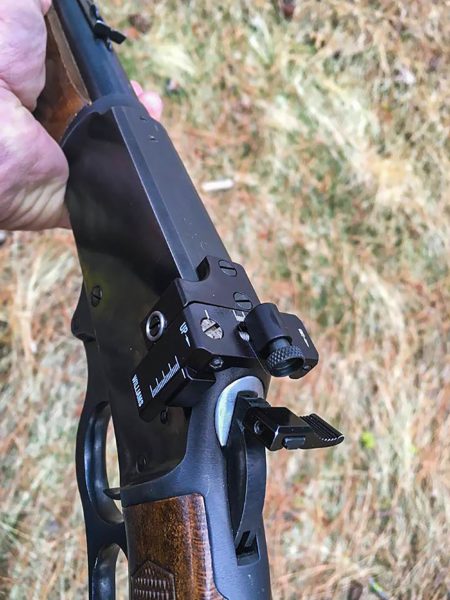
Williams receiver sight, this one mounts to the holes on top of the Marlin receiver, others mount to the side. Also visible in the photo is a hammer extension, a huge help when the rifle is equipped with a scope.
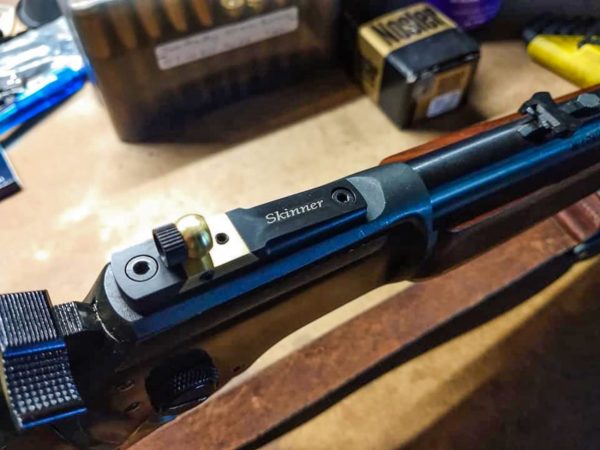
This Skinner sight is mounted on my 22 rimfire Marlin 39A, a version is also available for the centerfire Marlin and Henry lever action rifles.
Why the 170 grain flat-nose Sierra bullet?
A tubular magazine rifle has the bullet tip of one cartridge resting on or near the primer of another cartridge! This could produce a dangerous situation. Do not load most pointed bullets for the lever action 30-30 rifle. The old solution is to use only flat tip or round nose soft point bullets in lever action rifles. Hornady has an interesting alternative with their flex tip bullets and I hope to test those bullets in the future.
Sierra’s 170 grain flat nose soft point was introduced in 1959, specifically for the 30-30 though it has other uses as well. Lighter soft nose bullets, like the 130, 140, 150 and 160 grain versions work great in the 30-30 and boost the velocity, but I favor the 170’s for their penetration. Bear season and deer season here in Washington overlap and the heavier bullet should penetrate better. With bears, I like to see plenty of penetration. Barnes still makes their “original” 190 grain bullet with a lead core if a very heavy bullet is desired. Bullets intended for use in the 30-30 are designed to expand readily, even at the modest velocity produced by that cartridge.
Link to Sierra’s 170 grain Pro Hunter bullet: .30 CALIBER 170 GR. FN (30-30) – Sierra Bullets
The Powder Charge
There are many suitable powders for the 30-30 cartridge. A primary reason that I chose Varget is because I had plenty of it on hand, Varget powder has proven suitable for the 30-30 and 170 grain bullets. Hodgdon’s manual lists 33 grains as maximum, so I limited my handloads to 32.5 grains. That load produced an average of 2019 fps muzzle velocity from my 1970’s 20” barreled Glenfield.
According the JBM Ballistics calculator if zeroed at 150 yards:
- 100 +2.2” high
- 150 zero
- 200 -5.6” low
- 250 – 15.2” low
At 200 yards the bullet has slowed to 1496 fps.
Given these ballistics, I’m content to limit my shots to 200 yards or closer with my 30-30 rifle and this load. Group sizes with my rifle hover around 1.5” – 2” at 100 yards.
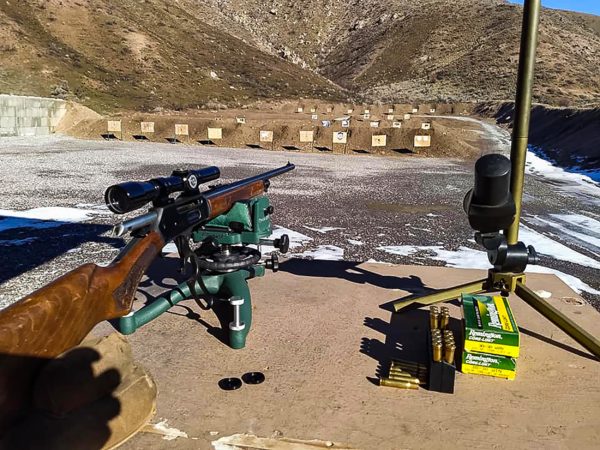
Sight-in session with the 30-30 Glenfield, 3x Leupold, and the 170 grain Sierra handloads.
The 30-30 is primarily a Hunting Cartridge. What’s it good for?
At modest ranges, the 30-30 is very capable of dropping big game. It may well be the most successful deer cartridge in North America. It’s easily capable of taking black bear, and I know a fellow who has taken several elk with it! He gets close and seals the deal with one well placed shot. Another hunter I correspond with is in South Africa and has taken most of the various plains game species with his 30-30 Marlin rifle, including eland, which can weigh in at over 2,000 pounds. He’s careful with his shot placement and enjoys the light & handy 30-30 rifle.
Full length resize with the Lyman Ideal C-Press, and trim to length on the Wilson trimmer
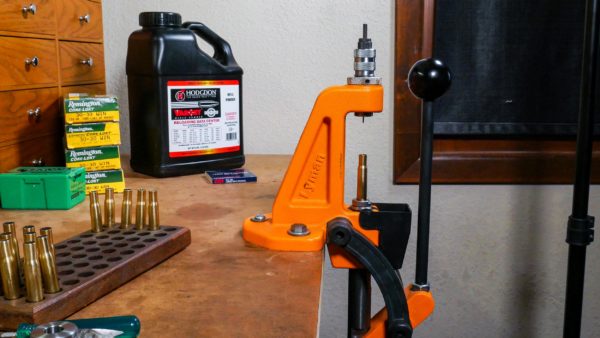
Gavin and I loaded our 30-30 cartridges on the compact Lyman Brass Smith Ideal “C” press. It’s a dandy little press for the 30-30 and many other cartridges. I like that it’s so open on the front, making it very easy to use. The press had no problem full length resizing the cases, or seating the bullets.
After the cases were sized, I trimmed them to length on my Wilson case trimmer. I did get a little over zealous on the case trimming and ended up with a few short cases, which we discovered when Gavin was loading his ammunition on camera. Oooops!
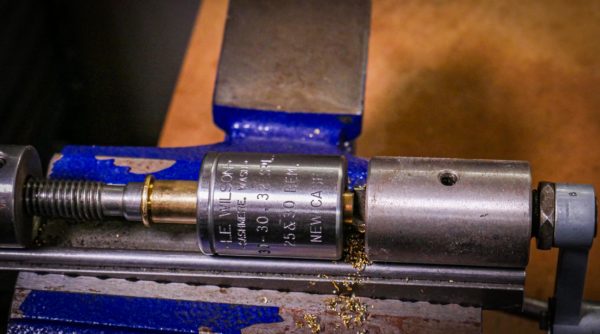
Prime the Cases
I primed all the cases with a hand held priming tool. Primers selected for this were the CCI 200’s, their large rifle primer. I’ve found those primers work great with Varget or any of the other powders I’ve used with the 30-30 cartridge. There’s no need for a magnum primer with this modest size case and medium burn-rate powders.
Charge the case with the Lyman Powder Measure & Trickler
With the powder measure set for 32.5 grains of Varget, it was easy to just drop the charge into the case. I had the powder trickler available, but it wasn’t necessary for consistent charges.
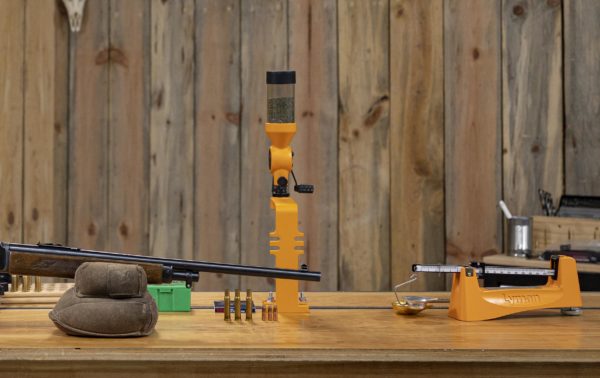
Bullet Seating
A handy thing about bullets designed for the 30-30 is that most have a cannelure rolled into the bullet jacket, perfectly placed. Use that as your guide to load bullets that will function smoothly through the action and into the chamber. We’re not chasing the lands with the 30-30, we’re trying to make ammo that functions 100 % of the time, a big part of that is seating the bullet to factory specifications, or very close to those.
I’ve found with the 30-30, that although a crimp is recommended, I’ve not needed it. Neck tension alone has been enough to prevent bullet set-back in the magazine. If you do crimp, either a roll crimp into the cannelure or a “factory crimp” works well.
Properly loaded 30-30 ammo will load easily into the tube magazine, and function ever so slick through the receiver. Loaded ammo should eject easily on demand.
Conclusion:
It’s an awful lot of fun to load for and shoot, but will the 30-30 lever action work for you?
For me it does. It’s handy, light, simple to use, and undeniably effective. To use it well one must accept range limitations. Interestingly, most big game in North America is taken at modest range, under 300 yards. The 30-30 is terrific at 200 yards and under.
If you’ve convinced yourself that you need a 10 pound, ½ MOA rifle that shoots superbly at 600 yards to hunt deer… Well perhaps the 30-30 lever action isn’t for you. But… Maybe you ought to give one a try and see if it does a fine job of helping you notch that tag… It’s a great little hunting rifle when used in the envelope envisioned well over 100 years ago.
Gavin and I had a lot of fun making the accompanying video. He was new to the 30-30, and nearly new to the lever action rifle. He’s got some cool plans in mind for getting his own 30-30 and perhaps we’ll take them on a hunt together someday.
Get the Gear
- Lyman Brass Smith Ideal Press
- Lyman Brass Smith adjustable powder trickler
- L.E. Wilson Stainless Steel Micrometer Case Trimmer Kit
- Lyman Brass Smith Powder Measure
- Lyman Brass Smith Powder Measure Stand
Don’t miss out on Ultimate Reloader updates, make sure you’re subscribed!
Thanks,
Guy
